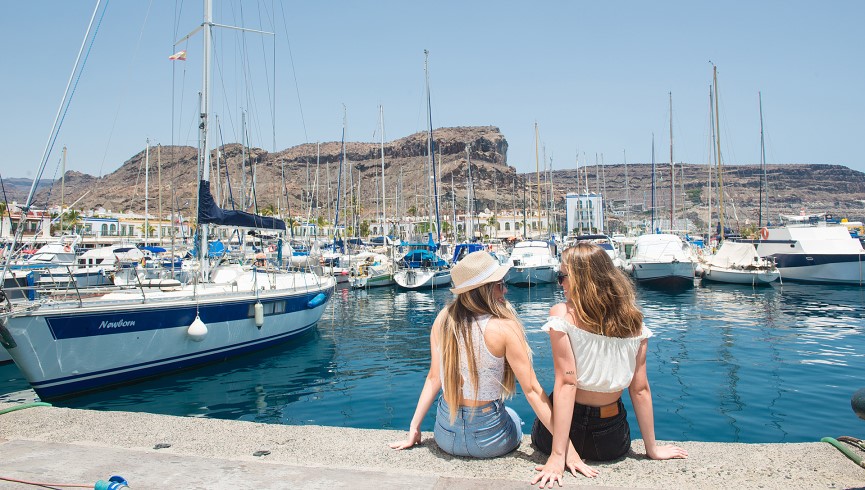
7 must-see places on Gran Canaria
If Gran Canaria is known for its nickname of a ‘miniature continent’, this must be because of the infinite choice of excursions it offers travellers. You’ll find a huge range of activities on the island: you can enjoy the beaches, discover charming villages, hike along tracks weaving through the high mountains, try the local cuisine, and go out dancing until the early hours. The diversity of its landscapes and climates will guarantee fun times for all. There are so many amazing places to discover on the island, but today we’re just recommending 7 spots to pack into your trip...
1. Maspalomas
The first on the list is Maspalomas, of course! Good weather all year round, an endless sandy beach, thousands of fun activities and a huge variety of hotels make this major tourist hub in the south of Gran Canaria the perfect option for a beach holiday. Maspalomas remains one of Europe's favourite LGTBI destinations year after year.
But what can you see in this area?
It’s hard to miss the Maspalomas Dunes. The area is now a Protected Natural Area, a vast sea of sand that moves in time with the ocean. It is doubtlessly one of the island’s most magical spots, the perfect scenario for a stroll after a day on the beach, or the best spot to enjoy the sunset. If you don’t mind getting up early on holiday, we’d recommend watching the sun rise among the dunes and its show of colours.
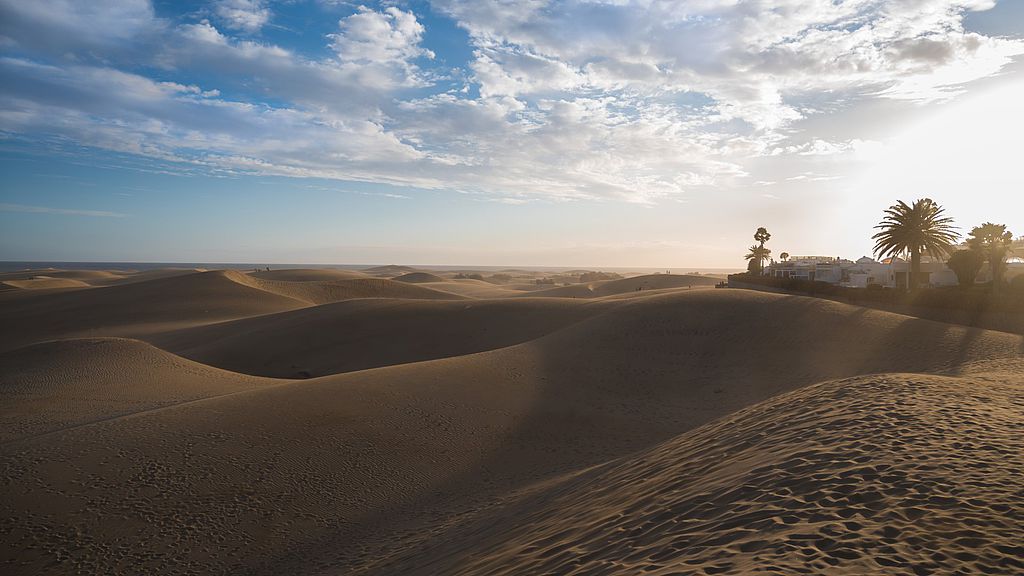
Forming part of the Nature Reserve, Maspalomas Beach lies at the foot of the dunes, boasting golden sand and transparent water. It connects up with Playa del Inglés, another must-see in the south of the island (these two beaches actually just form one long line of sand along the ocean).
The Yumbo Centrum shopping centre is another stop-off in Maspalomas. This popular shopping centre in the Playa del Inglés area is an emblematic spot for the LGTBI community in Europe. It’s a great place to get something to eat and drink or to go shopping during the day. Then as night falls, it becomes one of the liveliest LGTBI party spots in the continent. The Yumbo Centrum is also the epicentre of the Maspalomas Carnival and Maspalomas Gay Pride, attended by around 200,000 people each year.
Maspalomas also provides all types of accommodation, with a wide range of hotels and apartment complexes to suit all tastes and budgets, including several exclusive LGTBI accommodation options.
2. Puerto de Mogán
This picturesque coastal port, with white cottages and bougainvillea, is another recommended stop-off on your trip around Gran Canaria. El Puerto de Mogán is chock-a-block with charming spots. The area next to its small marina is known as the “small Venice of the Canary Islands” because of all the canals and bridges crossing it, woven among restaurants with terraces and cafés.
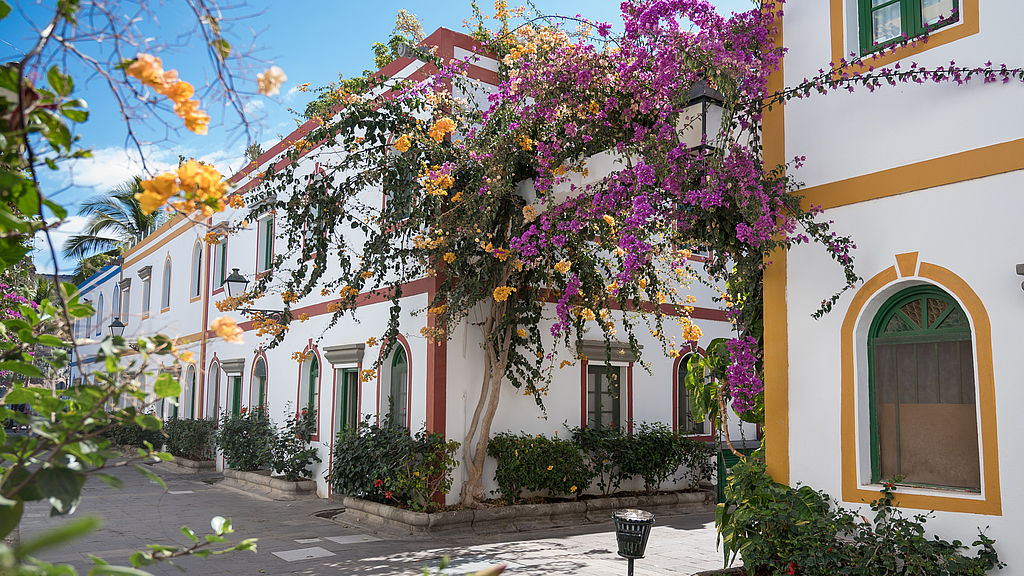
El Puerto de Mogán ranks high in Europe in terms of sunshine hours per year, so any time is a great time to kick back on the beach – one of the most peaceful in the area – and enjoy some fresh fish right by the sea.
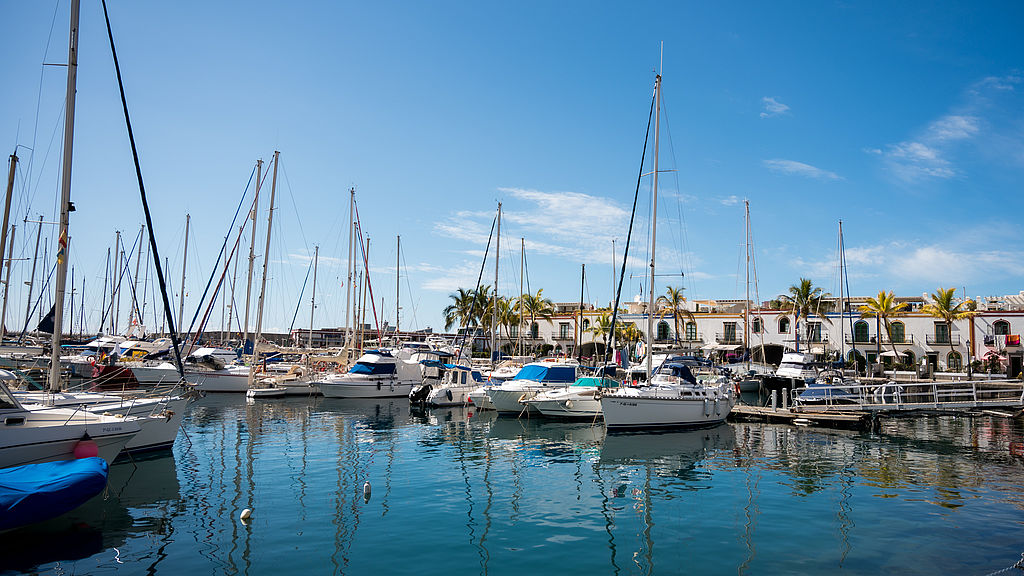
If you want to keep on exploring the south coast of the island, a wide variety of boat trips or boat parties set sail from El Puerto de Mogán where you can meet people and have an amazing time while exploring new places in Gran Canaria.
3. Vegueta Neighbourhood
During your stay in Gran Canaria, you really must visit Vegueta, the oldest neighbourhood in Las Palmas de Gran Canaria, the capital in the north-east. As you stroll along the narrow, cobbled streets of Vegueta, you´ll discover the origin of this port city brimming with history that for a long time was the last stop at the gates to the ocean for the great voyages of discovery.
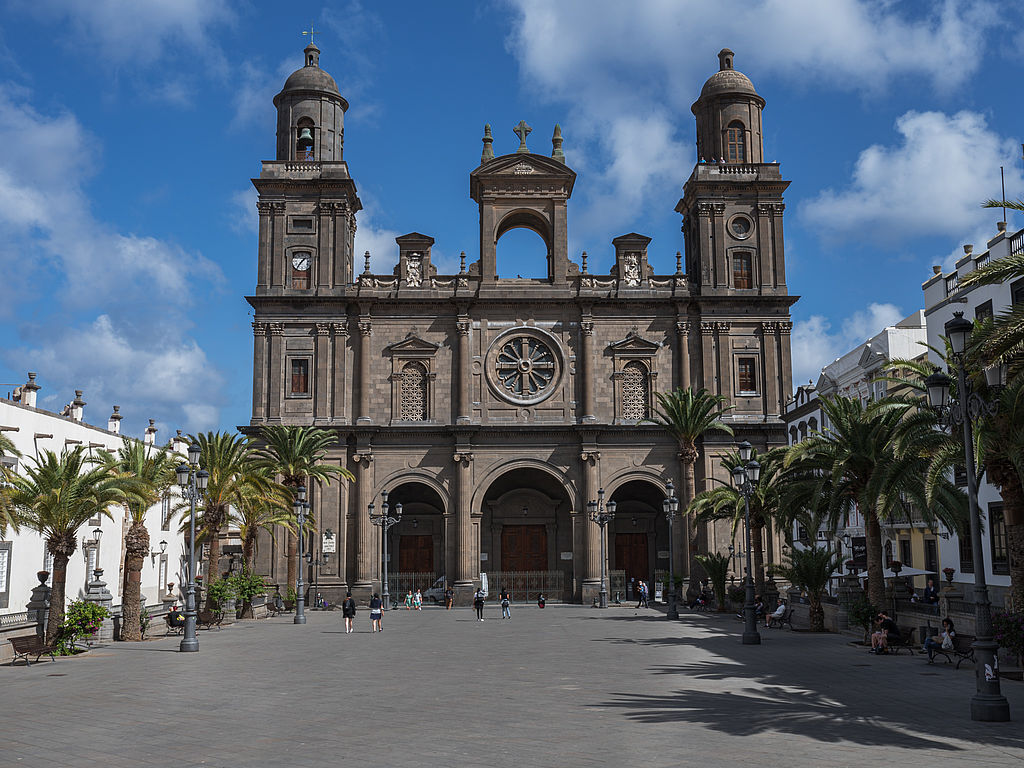
The Cathedral of Santa Ana stands out in the historical neighbourhood. Constructed by several generations, this building has an extraordinary scale for what was, at the time, a city so far from the rest of the world. You can climb the stairs up to its rooftop and enjoy one of the widest panoramic views of the old neighbourhood. Next to the Cathedral, there is the Plaza de Santa Ana, a square which in far-off times was the city’s administrative hub. Now it is a place for the local children to play, running through the crowds of pigeons and climbing all over the eight iron dogs that have guarded the cathedral since 1895.
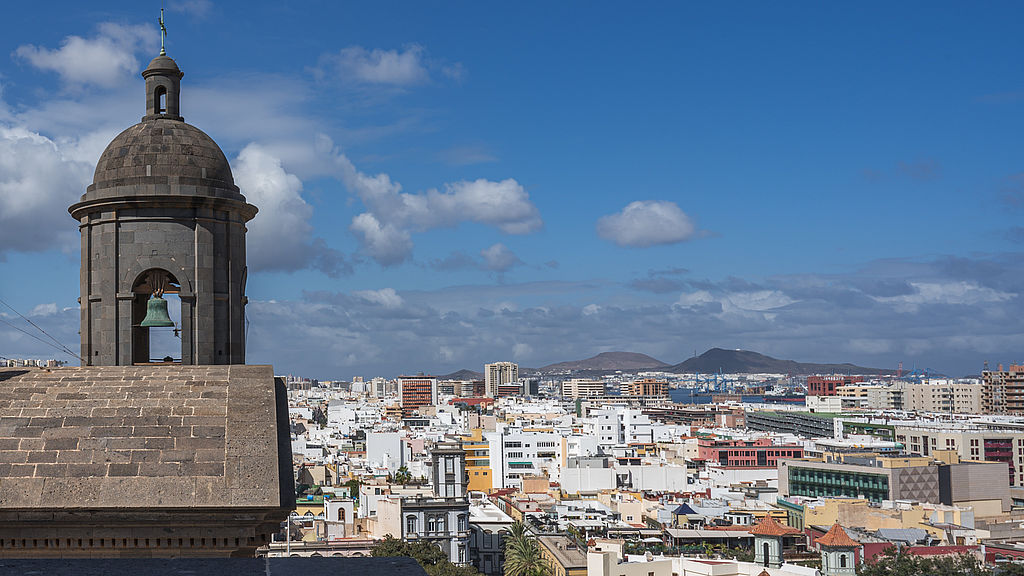
The emblematic Casa de Colón (Columbus House) is another gem in the Vegueta neighbourhood. Boasting over 500 years of history, it is doubtlessly one of the prettiest buildings in Las Palmas de Gran Canaria. As the former governors’ residence, this was where Christopher Columbus chose to stay on the island on his first trip to America. It is now a fascinating Museum focussing on research and dissemination of the history of the Canary Islands and their relationship with America. There is also a section commemorating Christopher Columbus’s voyages which provides a detailed explanation of the routes sailed at that time.
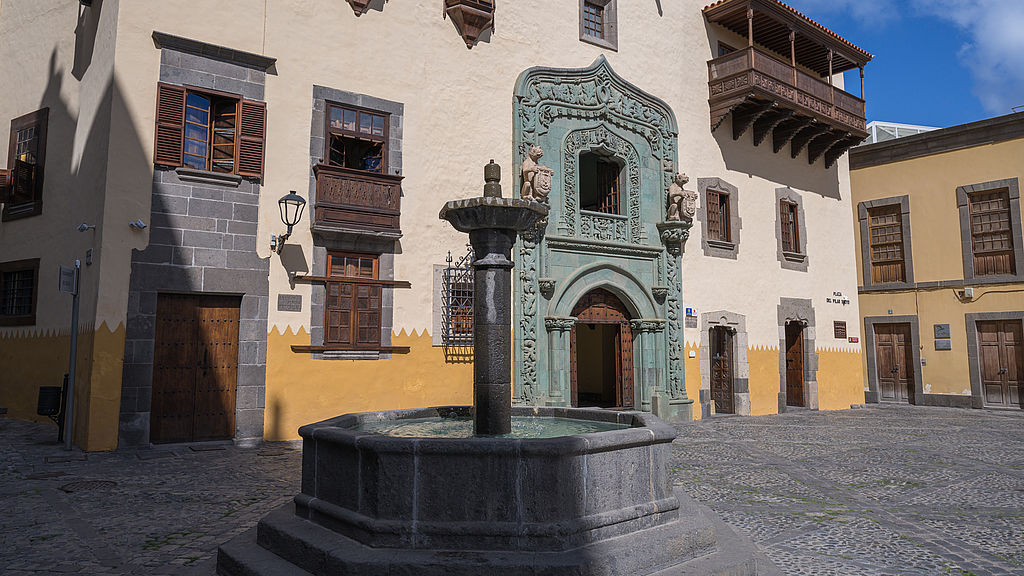
Modern art fans should not miss the CAAM (Atlantic Centre of Modern Art). The museum boasts a full exhibition programme and schedules educational activities on contemporary culture.
If you fancy blending into the daily life of the old neighbourhood, be sure to visit Vegueta Market, one of the oldest in Gran Canaria. It sells all types of tropical fruit, seasonal vegetables and traditional produce found in the island’s cuisine. The island’s delicious cheese is highly recommended.
4. Guayadeque ravine and caves
This ravine in the east of Gran Canaria is over 10 km long and characterised by its rich plant-life, prehispanic archaeological remains and cave-dwellings: natural caves that have been renovated and now house restaurants, homes, accommodation and even a hermitage!
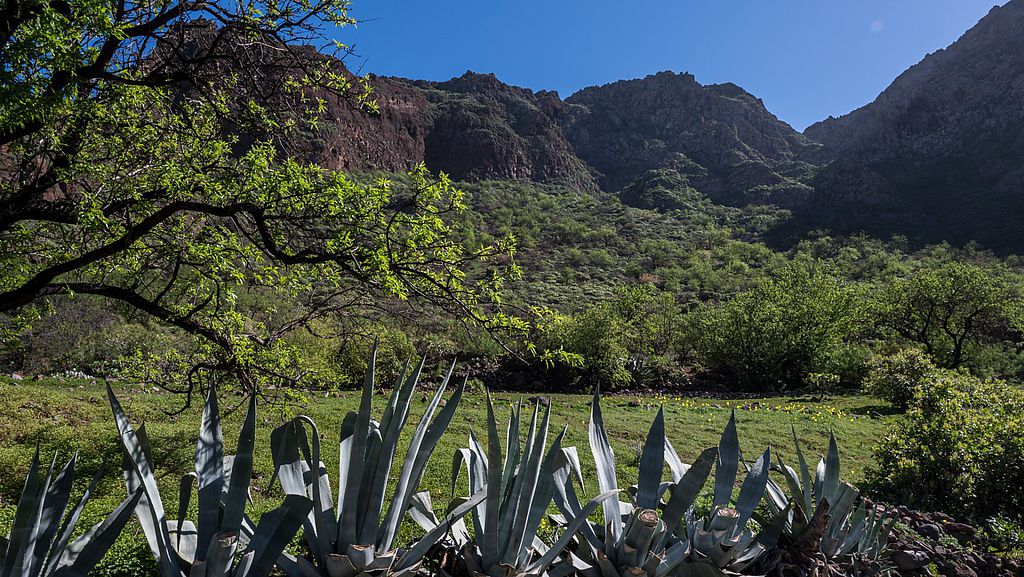
This ravine is just a 30-minute car drive from Maspalomas, so it’s the perfect choice for a day trip if you’re staying in the south of the island and you want to ring the changes with a excursion in the countryside.
You can start at the Guayadeque Visitors Centre, which narrates how the Canary Island aborigines lived in the area and provides a detailed explanation of the ravine’s environmental wealth. After enjoying the landscape, you can round off your excursion with a tasty Canary Island meal in one of the five cave-restaurants in the area: Tagoror, El Centro, Vega, Guayadeque and La Era.

If you like to hike, there are several paths in the area to explore the area on foot. The Guayadeque ravine can get pretty hot in the summer, so if you’re going to hike these routes, please take the necessary precautions and plan your hike properly.
5. Roque Nublo Rural Park
There’s so much more than sun and sand in Gran Canaria. This rural park is well worth a visit as you explore inland. Its Canary pine woods stretch out over more than 26,000 hectares, making it the largest protected natural area in Gran Canaria.
The park is home to the main symbol of the island: El Roque Nublo. This natural monument, like a monolith, stands 1813 metres above sea level, giving you an amazing view on a clear day. There are several routes of varying difficulty to climb Roque Nublo on foot. The shortest and simplest leaves the car park at La Degollada de La Goleta, along a path that leads to the rock, 1.5 km each way.
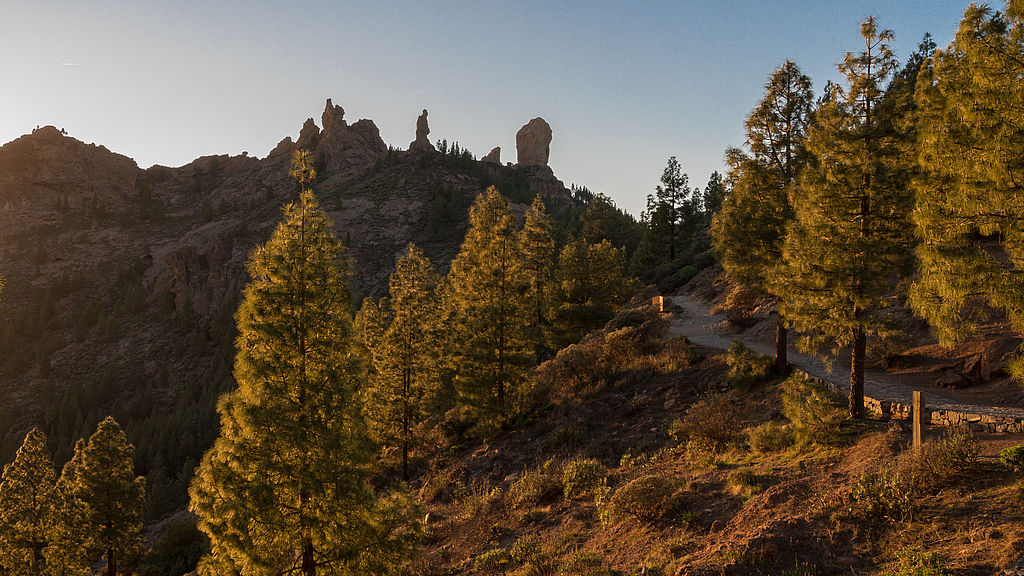
For anyone who would like to walk a little further, Roque Nublo Rural Park offers a network of paths to suit all tastes and abilities. If you want to really make the most of the experience, you can book a professional mountain guide to devise a safe, custom-built route just for you, really immersing you in the culture as you discover local traditions. They can explain the area’s flora and fauna in detail and tell the story of our ancestors.
Finish your route through the natural park in one of the local restaurants to enjoy the very best local cuisine.
The town of Tejeda - not to be confused with Cruz de Tejeda - is another must-see in this Rural Park. This beauty spot, slotted in among the mountains, was named one of the prettiest villages in Spain in 2015 and you’ll see why as you stroll through its cobbled streets with views of Roque Bentayga. The area is famous for its pretty almond trees, so the delicious handmade almond desserts from the village pastry shops also come highly recommended.
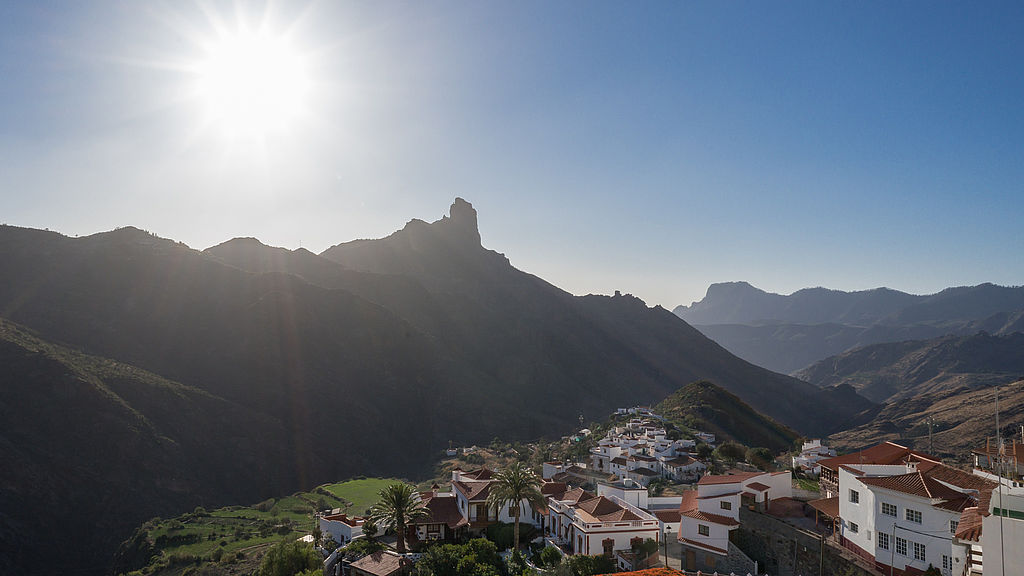
For wine buffs, a visit to the Bodegas Bentayga winery is practically compulsory. As well as boasting an extraordinary view of the Roque Bentayga, you’ll also get to taste of one of Gran Canaria’s high-altitude wines - made at more than 800 metres above sea level.
If you fancy finding out more about the wines made on the island, check out the Gran Canaria “Wine Route” which provides the best guide for wine tourists.
6. Playa de Las Nieves in Agaete
A fishing village with blue and white houses, another must-see place as you travel around the island. Located in the town of Agaete, in the north-west, it has everything you need for a lovely, relaxing day by the sea.
As soon as you arrive, you’ll be stunned by the view of the Tamadaba cliffs from its port. These cliffs include the Faneque crag, one of the highest in the world, standing over 1000 metres tall.
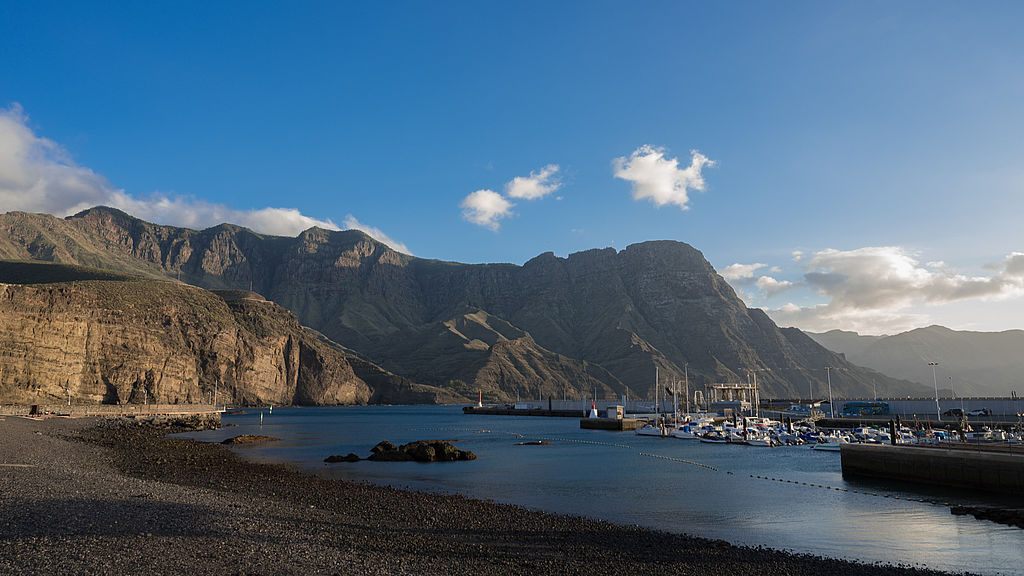
The village has a small beach with rocks and transparent water, Playa de las Nieves, which is perfect for sunbathing and a dip on hot days.
Its seafront - el Paseo de los Poetas – is perfect for a stroll. Take your time deciding which of the many restaurants you’re going to pick for some fresh fish, seafood or paella.
El Paseo de los Poetas connects the port with the Las Salinas natural pools. These pools in the volcanic rock are connected by pipes under the sea to protect swimmers from the open sea. This means you can have a relaxing swim and enjoy views of the imposing cliffs on the west coast of Gran Canaria.
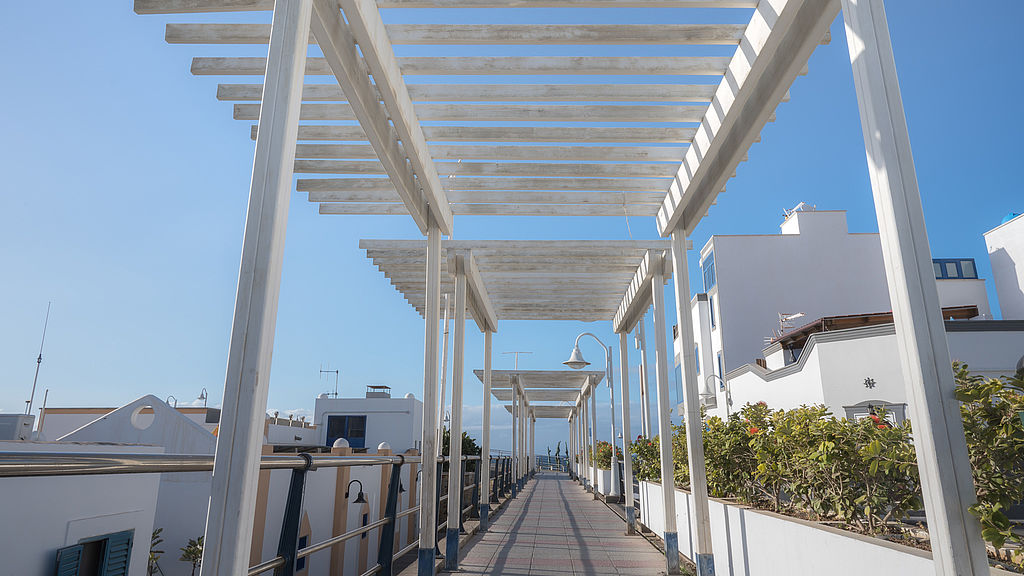
The village of Agaete is a little over 30 minutes by car from Las Palmas de Gran Canaria and approximately one hour from Maspalomas, so it is another great day trip if you fancy a change from the more touristy areas of the island.
7. A stroll through the stars
Discovering Gran Canaria’s starry sky is another experience you really can’t miss. The island has been certified as a Starlight Destination by UNESCO, and it is one of the best places on Earth to gaze at the stars.

The best way to admire the night sky is from one of the astronomy viewpoints in Gran Canaria. If you want to see the stars close up using a telescope with explanations from a guide, you can visit one of the island’s three observatories:
- The Temisas Astronomy Observatory, in the town of Agüimes.
- The Roque Saucillo Astronomy Centre, in the centre of la Vega de San Mateo.
- The Tasartico Astronomy Observatory, located in the west, on the less developed side of the island, in the town on La Aldea de San Nicolás.
And that’s it for our 7 recommendations. These are just ideas because our top recommendation is that you never stop exploring to unearth all the treasure lying in wait for you in our great small continent, Gran Canaria.

